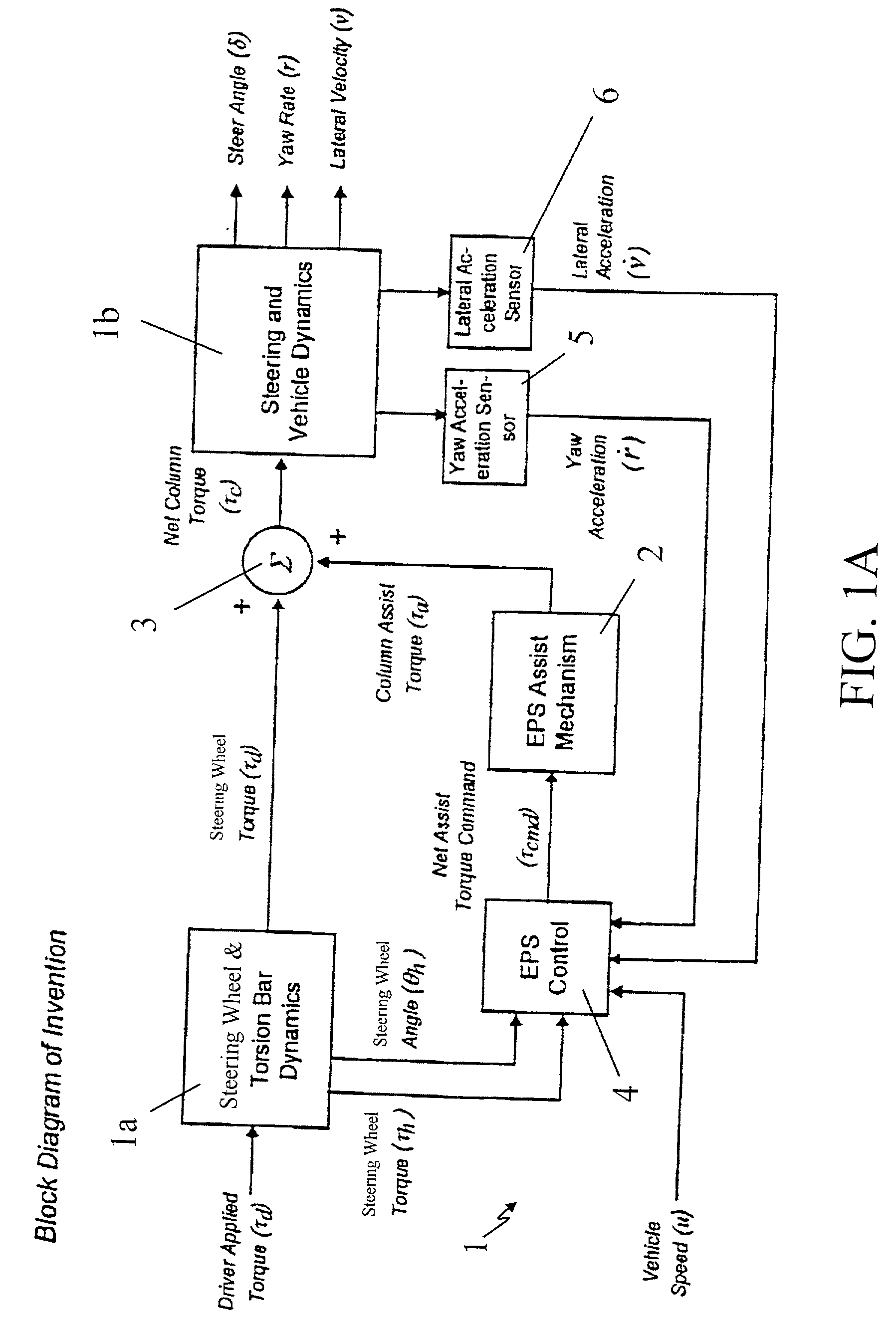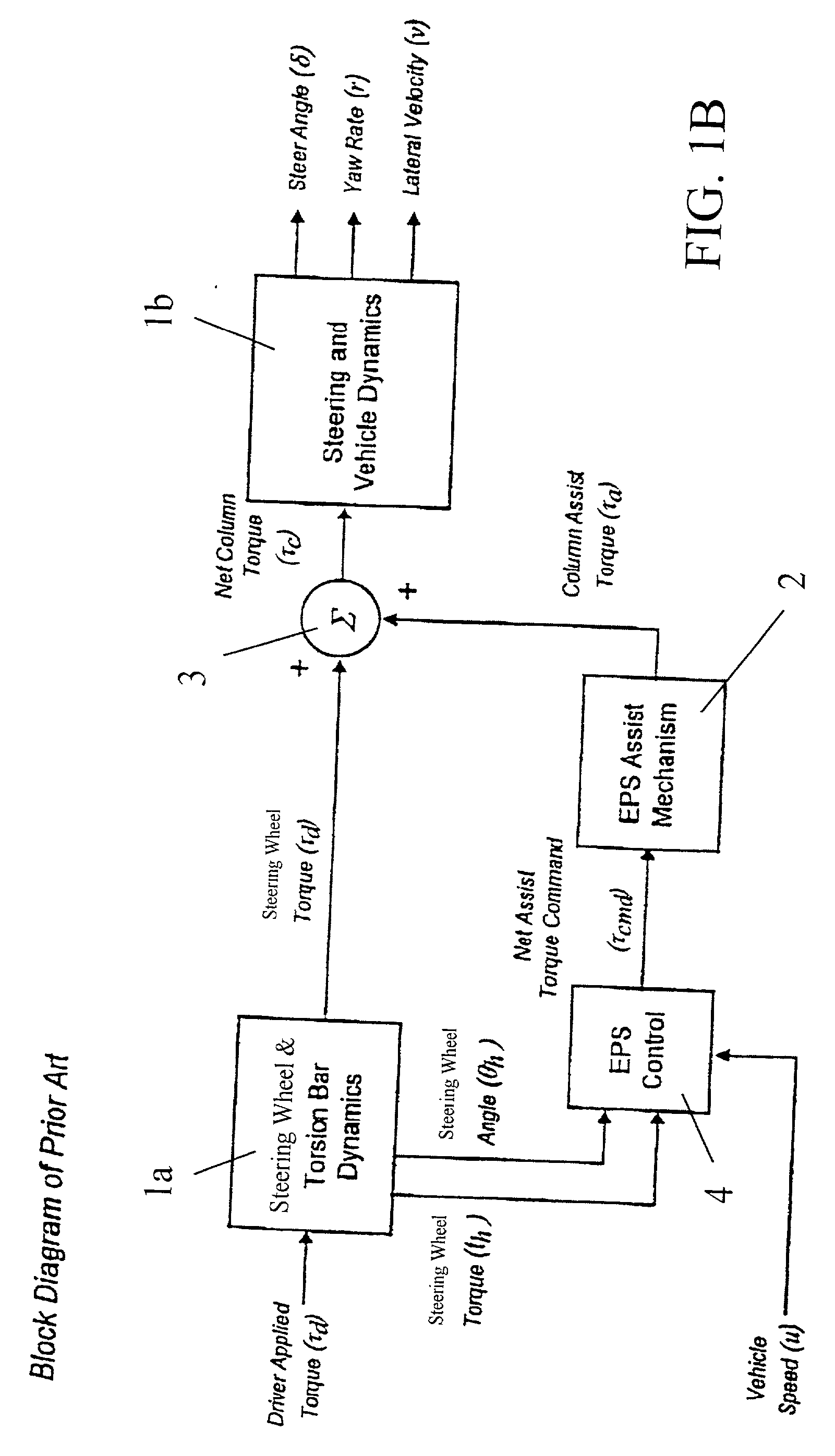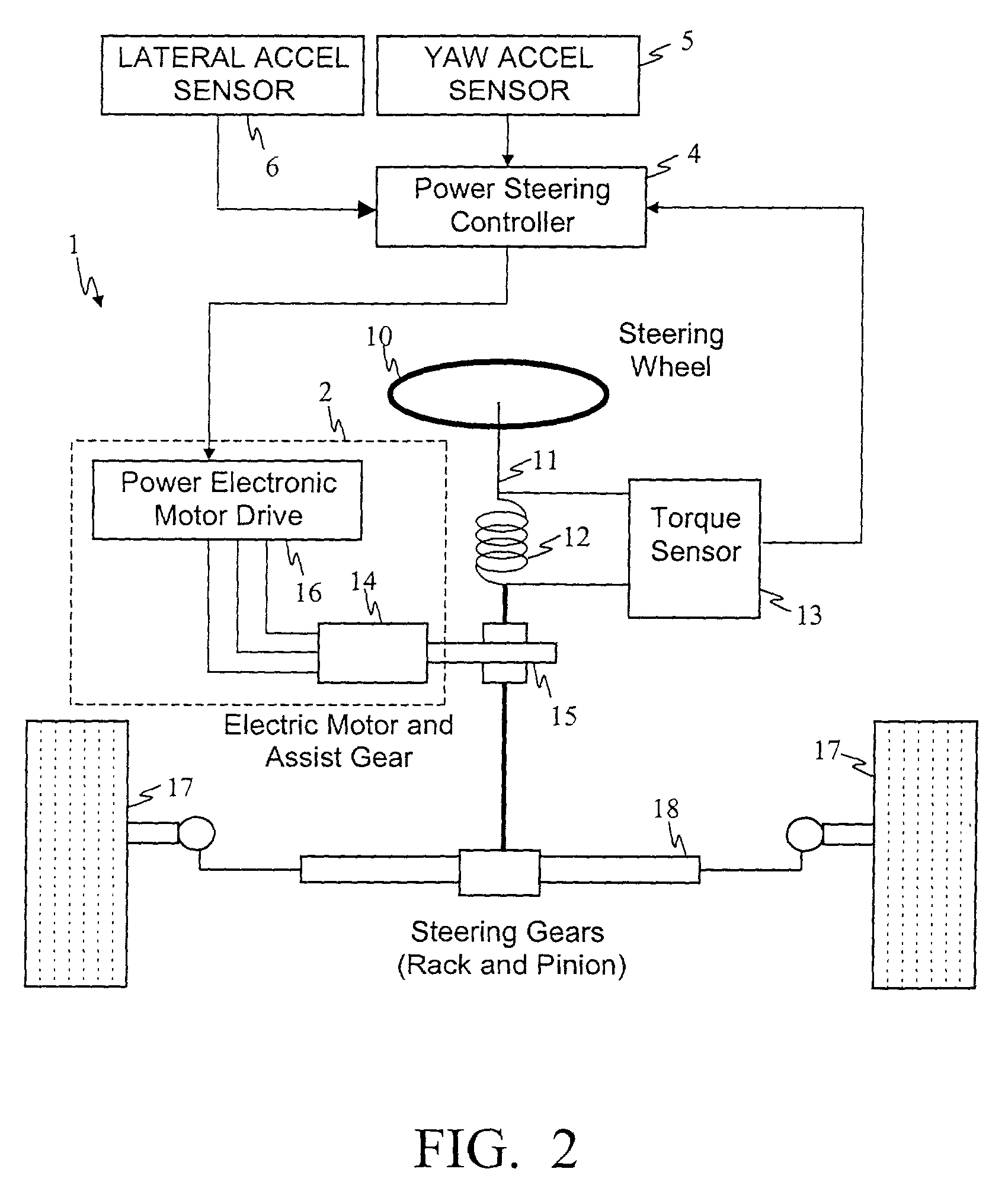Method and system for improving motor vehicle stability incorporating an electric power steering system
a technology of electric power steering and motor vehicles, which is applied in the direction of steering initiation, instruments, vessel construction, etc., can solve the problems of insufficient previous systems, complicated mechanical assemblies that provide connection, and insufficient torque-speed envelopes, so as to increase the available torque-speed envelope, reduce the amount of handwheel torque, and maximize the amount of assist torque
- Summary
- Abstract
- Description
- Claims
- Application Information
AI Technical Summary
Benefits of technology
Problems solved by technology
Method used
Image
Examples
Embodiment Construction
[0076] The vehicle response to a handwheel torque transient was simulated using MATLAB / SIMULINK.RTM.. Equations (1), (2), (4a-b), (5a-b), and (7a-b) were solved with and without yaw and lateral acceleration feedback. The driving conditions simulated correspond to a forward vehicle speed of 32 m / s (71 mph) on dry pavement. The parameter values used in the simulation were as identified in Table 1.
1TABLE 1 Vehicle Parameter Values Simulated Parameter Value front cornering coefficient C.sub.f = 140,000 N / radian rear cornering coefficient C.sub.r = 140,000 N / radian distance CG to front axle 1.sub.f = 1.0 m distance CG to rear axle 1.sub.r = 1.8 m vehicle speed u = 32 m / s vehicle mass m = 2,000 kg. vehicle moment of inertia J.sub.c = 3,000 Kg-m2 caster angle offset distance d = 0.100 m steering moment at front tire J.sub.s = 4.0 Kg-m2 steering damping at front tire J.sub.h = 0.15 Kg-m2 torsion bar spring constant K.sub.TB = 43 Nm / r torsion bar damping constant B.sub.TB = 4.0 Nm / r / s motor ...
PUM
 Login to View More
Login to View More Abstract
Description
Claims
Application Information
 Login to View More
Login to View More - R&D
- Intellectual Property
- Life Sciences
- Materials
- Tech Scout
- Unparalleled Data Quality
- Higher Quality Content
- 60% Fewer Hallucinations
Browse by: Latest US Patents, China's latest patents, Technical Efficacy Thesaurus, Application Domain, Technology Topic, Popular Technical Reports.
© 2025 PatSnap. All rights reserved.Legal|Privacy policy|Modern Slavery Act Transparency Statement|Sitemap|About US| Contact US: help@patsnap.com



